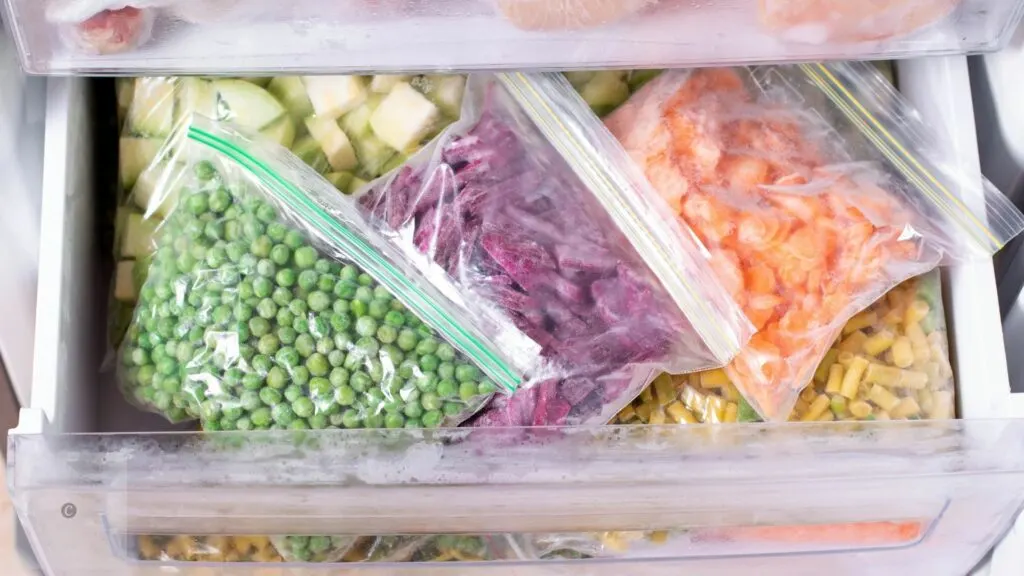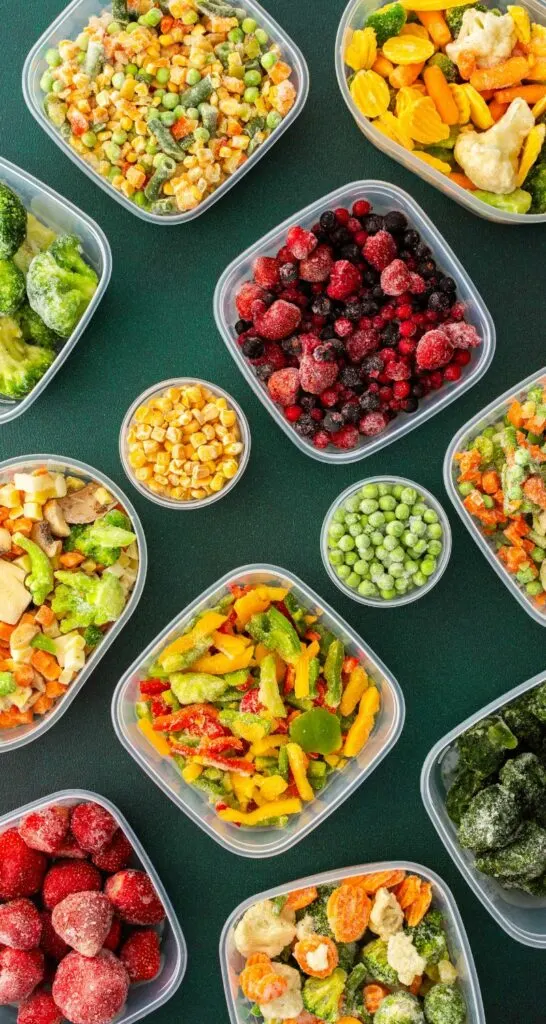Freezing is one of the simplest and most common ways to preserve a harvest. However, mistakes can happen, leading to spoiled food and frustration. But you can freeze anything as easily as creating an IviBet login. Here’s how to freeze vegetables and herbs to keep their original taste and benefits intact.

Universal Freezing Rules
- Regularly shake chopped pieces during freezing to avoid clumping.
- Store frozen products in airtight packaging.
- Arrange items in the freezer so that the drawer with less frequently used products isn’t pulled out unnecessarily.
- Label containers or bags with the freezing date or expiration date.
What’s Suitable for Freezing:
- Containers of various sizes.
- Zip-lock or heavy-duty plastic bags.
- Muffin or ice cube trays.
Freezing Rules for Herbs
You can freeze any herbs, but often, herbs for tea are dried, while those for main dishes and soups are dried and frozen.
Wash the herbs and let them dry in a sieve. Finely chop and distribute them in containers, leaving a five-millimeter gap from the lid. During freezing, periodically shake the container to keep the chopped herbs loose. Frozen herbs last up to a year until the next summer.
Avoid freezing herbs in bunches or branches, as they will stick together when chopped.
Another way to freeze herbs is by incorporating them into a sauce or butter. In this form, they won’t be suitable for salads but will be convenient for adding to main dishes, such as stews, fried potatoes, meat, or fish. Blend or finely chop the herbs and mix with softened butter. Freeze in small portions using small molds for ease of use. Herb butter can be stored for up to six months.
Freezing Rules for Vegetables
Bell Peppers
Bell peppers are an excellent vegetable for freezing as they don’t become mushy after thawing and retain their flavor. You can slice them into strips for stews or cut them in half for broths. You can even prepare stuffed peppers in advance. Bell peppers can last until the next summer.
Tomatoes

To save time, freeze small tomatoes whole. You don’t even need to wash them — just place them in bags and periodically shake them until they are fully frozen. When you need a tomato, simply rinse it with hot water, and the skin will peel right off. In just five minutes, the tomato will be ready for chopping. After thawing, tomatoes aren’t suitable for salads, but they are perfect for stews, scrambled eggs, pasta, and soups.
If you plan to make sauces or tomato soups often in winter, prepare a sauce base. Grate skinless tomatoes or blend them in a food processor. Place on low heat, add a bit of salt, pepper, lemon juice, sugar, and spices. Let the tomatoes reduce by half to save space in the freezer. Cool, pour into containers, and freeze. You don’t need to thaw the sauce — just add it directly to the dish you’re cooking.
Zucchini and Pumpkin
Peel the vegetables and remove the seeds. Cut them into small pieces and transfer to bags, shaking them periodically while freezing. These vegetables are perfect for stews. For soups, you can freeze pumpkin in larger chunks.
Alternatively, grate the vegetables and freeze in containers: zucchini for fritters and zucchini cake, and pumpkin for oatmeal.
Carrots and Onions
Avoid freezing carrots whole or in chunks, as they become soft after thawing. This isn’t necessary, as whole carrots store well in a cool place. However, grated carrots (prep once, use for multiple dishes) save time in the kitchen. Grate the carrots and place them in a zip-lock bag, spreading them in a thin layer. After freezing, you can easily break off the needed amount. Raw carrots can last up to a year, while those sautéed in oil will last up to six months.
You can also freeze a ready-made sauté of onions and carrots. Finely chop the onions, sauté them in butter or vegetable oil, add grated carrots, and cook until they turn from orange to yellow. Cool the mixture and portion it into containers. Avoid freezing onions separately, as they will turn mushy.
Freezing Berries and Fruits
Berries for pies and dessert decorations can be frozen whole, while fruits should be cut into pieces. Pre-freeze them on a cutting board so that they don’t touch each other and stick together. Then transfer them to a bag or container.
There’s no need to thaw them beforehand; small pieces will be ready to eat in just a few minutes.
You can also puree the berries and fruits in a blender with sugar and freeze them in small containers. Or make a mix, like raspberries and cherries or peaches and strawberries. This fruit-berry puree can be used for making fruit drinks or as a cake filling. On days when you want to relive the taste of summer, thaw the mixture and enjoy it with a cup of fragrant herbal tea.

Jessi is the creative mind behind The Coffee Mom, a popular blog that combines parenting advice, travel tips, and a love for all things Disney. As a trusted Disney influencer and passionate storyteller, Jessi’s authentic insights and relatable content resonate with readers worldwide.
